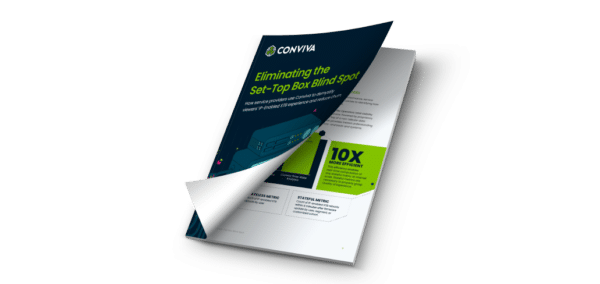
Popular culture embraced the dream of the “connected home” decades ago. Need proof? Just watch an episode of the futuristic 1960s-era cartoon series The Jetsons. Even in that pre-PC, preinternet era, the connected home was a tangible place run by computerized, artificially intelligent technology-all activated at the push of a button! (Plus they had flying cars.)
In 2012, the connected home remains an ideal to be aspired to. It just has to be modified to fit the realities of an internet-linked, content-driven world. The question is, how close are we to this ideal—and how much closer will this year bring us to attaining it?
The Ideal Connected Home Defined
Before digging into the current state of the connected home, let’s find out how content producers, providers, and equipment makers define what the ideal connected home should be.
The first definition: “The ideal connected home organizes, simplifies, and unites a consumer’s content, entertainment, and communications into an easy-to-use and elegant solution,” says Karen Sohl, director of corporate communications withCisco Systems, Inc.’s Home Networking business unit. To achieve this, the connected home brings together everything from computers/tablets, smartphones, TVs, set-top boxes, and DVD players to lighting, appliances, and heating/air conditioning systems, all accessible and controllable through a “simple, intuitive and consistent interface,” she notes. “The consumer is in control of all the things that are important to them.”
Sohl’s ideal of the connected home resonates with others in the industry. This said, they all have their own spin on the concept.
“From a consumer perspective, the connected home is a place where all of your media is integrated around your identity, and can be accessed in a very easy way,” says Darren Feher, president and CEO of Conviva, Inc., a company that creates live and on-demand video optimization solutions for content providers. “This is an environment where the consumer can enjoy content from a wide range of sources and platforms-and do so without breaking a sweat.”
Philip Nelson is NewTek’s senior vice president of strategic development. As a maker of portable live and 3D animation tools, NewTek is focussed on video in all its forms. So it makes sense that Nelson’s ideal connected home is a place “that makes content convenient to view,” he says. In such a perfect world, “People need to be able to watch where and when they choose.”
Yet another definition comes from Andrew Kippen, Boxee, Inc.’s vice president of marketing. “The ideal ‘connected home’ is an entertainment experience enhanced by data and social context available over the internet,” he says. It succeeds by “letting the user have a more relevant passive experience, while offering the opportunity for the user to dive deeper or interact with anything he comes across.”
Brick Eksten is president of Digital Rapids Corp., which helps providers and operators serve content to consumers. From his point of view, the ideal connected home offers “ubiquitous content access from any device within the home through a single authentication sign-on-not separate sign-ons for each device-with seamless sharing, a consistent user experience and consistent quality across these devices.”
On the macro scale, the ideal connected home offers “seamless wired and wireless data connectivity [that is] as ubiquitous as electricity,” says William Cooper, chief executive of the U.K.-based convergence consulting firm informitv.
Put it all together, and the connected home lets you get whatever content you want, when you want it, and on whatever device you want it. Bandwidth isn’t an issue; there are no latency issues nor stuttering—and all of the various devices you own interoperate seamlessly with each other.
Connected Home Opportunities
In the world of the functioning connected home, the possibilities for profit are mind-boggling. In particular, streaming media providers are well-placed for success. The reason: “Ubiquitous connectivity will present significant opportunities for digital media distribution that will begin to erode conventional channels, much as the Internet has already transformed print communication,” Cooper predicts.
“For content providers, it offers new monetization opportunities,” echoes Boxee’s Kippen. “For equipment makers, it will create demand for new devices and potentially accessories in the living room.”
Cisco’s Sohl is equally bullish about the connected home. In such a world, “opportunities for streaming media providers and equipment makers are big,” she says. Sohl sees these opportunities occurring as consumers connect their living room TVs to the web, in order to access Netflix, Hulu,Pandora, YouTube, Ustream, and the myriad other content providers online. “Video is going to drive the next stage of the connected home because video will be enabled on many screens in the home beyond the TV,” she says, not just in tablets and smartphones, but built into “countertops, windows, mirrors, furniture and more.”
The bottom line is that in a world where the connected home is a reality, there’s lots of money for everyone to make.
Reality Check: The Connected Home Today
We now know what the ideal of the connected home is and what it could mean from a profit standpoint. So what is the state of the connected home right now?
“Today, the connected home is closer and closer to becoming a reality,” says Kippen. To prove his point, he notes that Boxee—”along with several other companies”—is now developing a two-screen experience that blends tablets and TVs, so that you use them both at the same time. That’s not all. “With Facebook’s Open Graph, almost any STB [set-top box] maker has the option to personalize your TV experience and share what you’re watching with friends,” Kippen says.
Kippen offers the most positive response to the question posed earlier. Others are far less optimistic in their feedback, with solid reasons for their pessimism.
Take ease of use, or current lack thereof: In 2012’s actual connected home, “there are still too many wires and clunky interfaces,” says NewTek’s Nelson. “We are still in the early adopter’s phase.”
Digital Rapids’ Eksten is similarly downbeat. He complains that today’s connected home lacks the single sign-on and centralized digital rights management authority needed for a seamless user experience, “although a variety of ecosystem participants such as cable operators are actively pursuing such approaches,” he says. “Meanwhile, the user experience varies considerably across devices. And still today, you generally can’t get a single home media hub device that supports all available OTT [over-the-top] services—forcing consumers to choose and make compromises.”







